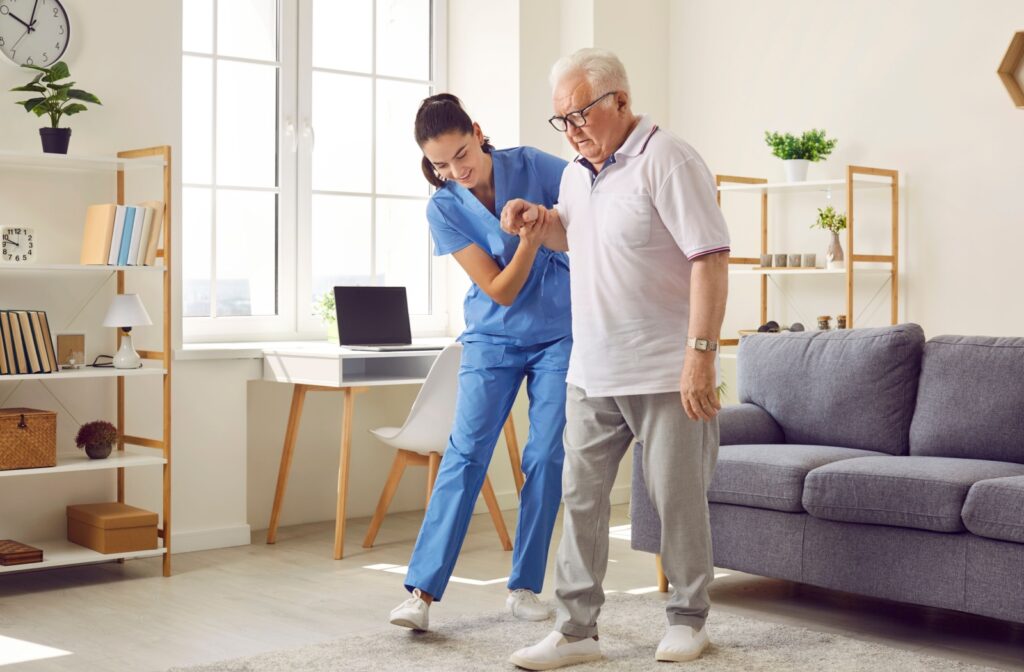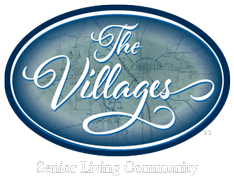Sometimes, we all need a little help. For many seniors across the country, falls aren’t a minor risk, they’re a potential problem every day. Whether your loved one lives at home or in some form of senior living, it’s crucial to intervene to help them stay safe in their everyday life. Fortunately, there are some simple ways you can improve your loved one’s well-being.
Some safety measures to prevent falls in seniors include:
- Proper diet and nutrition
- Regular exercise
- Clear living spaces
- Mobility aids
- Home modifications
- A move to senior living
Read on to discover more about each of these measures and how they can be implemented in your loved one’s life and daily routine.
Proper Diet & Nutrition
When it comes to health and wellness of any kind, it almost always begins with diet and nutrition. To stay healthy, your loved one will need a balanced diet with plenty of vitamins and minerals. This gives them the essential nutrients needed to keep their bones and muscles strong. Think of diet as the foundation of helping your loved one stay physically healthy.
A healthy diet is key, so encourage your loved one to incorporate foods such as:
- Leafy green vegetables
- Fresh fruits
- Whole grains
- Lean proteins
- Dairy products
- Healthy fats
This is an excellent place to start—but it’s just one part of the bigger picture.
Regular Exercise
Physical exercise is one of the most important pieces of the puzzle. It helps your loved one maintain muscle strength, flexibility, and balance—and these are crucial to helping them stay upright and safe. Regular exercise is also closely linked to a wide range of health benefits, such as a lower risk of illness and cognitive capabilities.
The CDC recommends that seniors over the age of 65 try to exercise at least 150 minutes a week at moderate intensity, or 75 minutes a week at an intensive pace. It’s also recommended to participate in at least 2 sessions of strength training per week, along with regular balance exercises to help improve the ability to stay upright.
Try to encourage your loved one to regularly perform exercises like:
- Walking
- Tai chi
- Yoga
- Water aerobics
- Light weightlifting
These can all be adapted to your loved one’s physical capabilities, and offer a low-impact way to slowly and steadily boost their physical abilities. They’re an excellent way to bolster your loved one’s balance and their overall physical health.
Home Modifications
Modifying your loved one’s home can also make it easier and safer for them to move around. Take a look around their home and try to identify any potential hazards like loose rugs or clutter in the walkways. Then, consider making adjustments such as:
- Installing ramps in place of stairs
- Widening doorways for better wheelchair access
- Adding non-slip mats to areas where falls are a risk
- Setting up adjustable showerheads and handheld shower sprayers
- Installing grab rails, railings, and non-slip treads on stairs
- Installing ramps if possible
- Make sure their home is well-lit
This can help make a safe living environment for your loved one while still maintaining a welcoming and secure space. It’s about much more than making things a little easier, it gives you both the peace of mind of knowing your loved one can safely navigate their own home!
And don’t worry—if you’re uncomfortable doing the work yourself, you can always research around to see if any companies specialize in senior-safe home modifications.
Mobility Aids
For seniors, independence is a crucial part of maintaining quality of life. But when falls become a significant risk, it can be difficult to safely navigate the world alone. This is when mobility aids become an excellent option.
Mobility aids can provide your loved one with the support and confidence they need to safely move about. These tools don’t just help prevent falls, they play a significant role in restoring a sense of autonomy to seniors. With mobility aids, your loved one can continue enjoying their everyday activities without putting themselves at risk.
There are plenty of senior-safe mobility aids, such as:
- Walkers or rollators
- Canes
- Wheelchairs
- Motorized scooters
- Grab bars and rails
- Stairlifts
- Crutches
These can be a simple but elegant way to give your loved one a safe way to maintain their independence and quality of life. These tools can help them move around comfortably and safely with confidence.
A Move to Senior Living
These measures can be an incredible way to help your loved one stay safe in their everyday life. But sometimes, a professional touch may be needed to improve your loved one’s quality of life.
At The Villages of Murfreesboro, we’re dedicated to providing an environment where everyone can thrive. Book a tour with us to find a community that truly cares about keeping your loved one safe.




